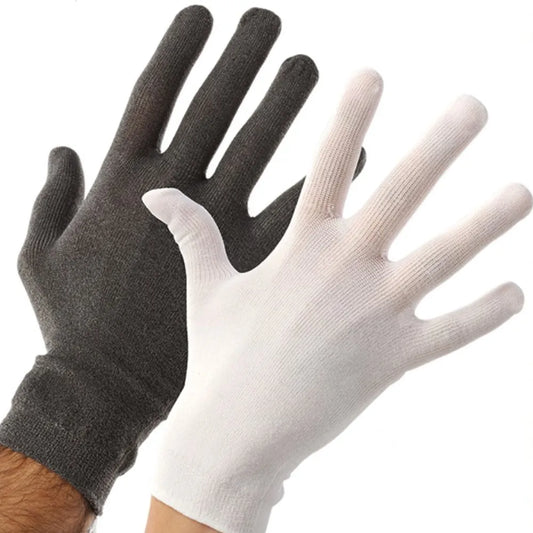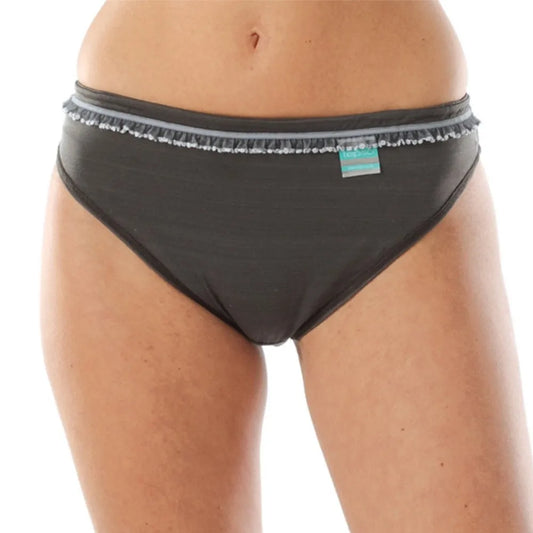Regular soaps and body washes have been shown to dry skin and can aggravate eczema. As a result most eczema sufferers are advised to use emollients for washing. This can take a bit of getting used to as emollients don't foam, which can be a bit disconcerting if you are used to working up a lather.
Which emollients can be used for washing?
While specific emollient wash products exist, most emollients can be used as a soap substitute (except pure white soft paraffin). The main difference between emollient washes and regular leave-on emollients is that the washes are typically more runny. They may also contain a foaming agent so that they act more like regular washing products.
Emollient bath additives are also available to buy. These are added to the bath water and work by creating a layer of oils over the surface of the bath water. These oils coat the surface of the skin as you bathe with the aim of preventing water evaporating from the skin surface. However, a recent study has shown no additional benefit of using bath additives in the treatment of childhood eczema1. These are also not designed to be used for washing.
Use your regular leave-on emollient in the first instance. Many leave-on emollients are designed to be 2 in 1 (or even 3 in 1) products. The 2 in 1 products are typically creams or lotions and can be used as a regular cream or for washing. The 3 in 1 products are usually ointments and can be used as a bath additive as well as for washing and as a leave on treatment. You can read more about the different types of emollients here.
How to wash with emollients
- Washing emollients and lotion emollients: These can be used just like you’d use regular washing products. Squirt a teaspoon sized dollop onto your hand or a flannel and away you go.
- Emollient creams: There are two ways to wash using emollient creams. You can squirt a teaspoon sized dollop onto your palm, dilute a little warm water, rub it between your palms to mix and then use as you would a regular washing product. Alternatively, you apply a layer of emollient to your body before getting into the tub or shower then washing it off. This method is particularly useful if the water stings when it touches your eczema.
- Ointments: These are a lot stiffer than creams and need to be diluted with warm water and worked between the palms before you can smear them over the skin. Again, take a teaspoon sized scoop mix with warm water until it is gloopy enough to use as a regular body wash.
To use an ointment as a bath additive: add a teaspoon sized scoop in a cup of very hot water, stir until it has dissolved then add to the bath water. Check the temperature of the bath water before you get in.
If you struggle with using your regular emollient for washing, it’s worth investigating those designed specifically for washing.
The standard guidelines eczema bathing still apply:
- keep the water as cool as you are comfortable, hot water will strip the skin's natural oils
- pat rather than rub dry (we find that micro-fibre travel towels work well)
- apply your regular emollient while the skin is still slightly damp
When regular emollients aren’t enough
While emollients are effective cleansers for everyday use, they only have limited effectiveness when it comes to killing germs and viruses. Emollients like Dermol Wash include antimicrobial ingredients which solve this problem. These products are useful if you are prone to skin infections (and for smelly feet and armpits).
These are available both over the counter and, for severe eczema, can be prescribed at your GP's discretion.
Bathroom room safety and maintenance
Emollients are oily and will make the bath or shower very slippery for both you and the next person to use them. Non-slip bath mats both the tub/shower and on the floor are must when washing with emollients.
Cleaning surfaces with washing up liquid, very hot water and a soft cloth or sponge will remove the residues and help to keep your drains clear. Rinse well to remove the detergent residues before your child uses the bath again.
As emollients don’t effectively kill germs in the same way as regular soaps and detergents, it’s important to use a clean flannel every time. Without the effect of soap, damp flannels become a microbe breeding ground.
Emollient build-ups in drains can be a problem, especially if you are using ointments or live in an older house with outside waste pipes (the water cools more quickly and the emollients go hard again before they reach the sewer). Soda crystals washed down with boiling water are a cheap and effective solution.
What about shampoo?
When the hair is very short and fine, emollients can be used instead of shampoo. However, for longer, thicker hair, you may need to switch to an eczema friendly shampoo. A number of the brands make shampoos specifically eczema sufferers including E45, Aveeno and Eurecin.
Be wary of shampoo marketed as ‘gentle’ as this usually means that they typically contain cocamidopropyl betaine, which is kind to eyes but is also known to aggravate eczema in some people. Other possible irritants to watch out for include fragrances, sodium laureth sulphate (SLS), any of the parabens and methylchloroisothiazolinone or methylisothiazolinone.
Try to keep the shampoo foam away from your skin. The easiest way to do this is to wash you hair over the skin. If you are washing your hair in the bath, do it last and rinse off with fresh water. If you are using a shower, try not to let the foam run over your body.





